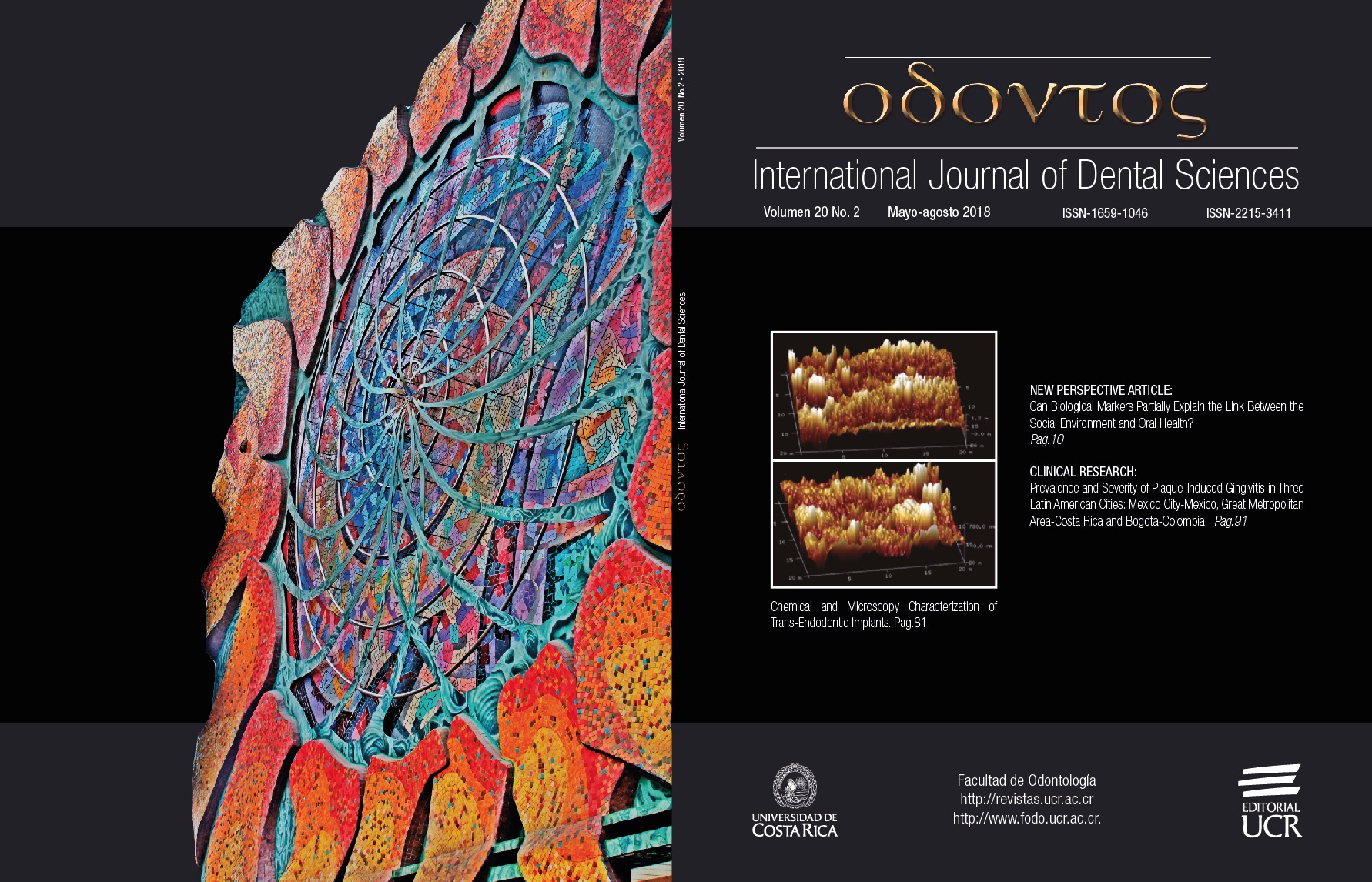Resumen
There are several controversies regarding the efficacy of homeopathic substances; however, these remedies are used in many countries for the treatment of various pathological conditions. The purpose of this study was to evaluate the in vitro antibacterial activity of two homeopathic tinctures Arsenicum album (mineral extract) and Lycopodium clavatum (plant extract) on the periodontal bacteria Actinomyces israelii, Streptococcus sanguinis, Prevotella intermedia, Aggregatibacter actinomycetemcomitans and Phorphyromonas gingivalis (P. gingivalis). Materials and methods: Equal numbers of bacteria were seeded on agar plates containing enriched media with the homeopathic solutions at 1dH and 1cH dilutions. After 7 days of incubation under anaerobic conditions, colony forming units (CFUs) were counted. The antibacterial effect was calculated based on the total number of CFUs observed on non-tincture containing agar, and on the tincture containing plates. Results: No visible growth of any of the strains was observed on the plates containing Arsenicum album at any of the dilutions tested. In contrast, when Lycopodium clavatum at 1cH dilution was tested, only P. gingivalis was susceptible to this compound. Conclusions: The results suggest that the mineral extract tincture had a greater antibacterial activity than the plant extract tincture, also Lycopodium clavatum preparation could be an effective inhibitor of periodontal pathogens bacteria such as P. gingivalis.
Citas
Socransky S. S., Haffajee A. D., Smith C., Martin L., Haffajee J. A., Uzel N. G., et al. Use of checkerboard DNA-DNA hybridization to study complex microbial ecosystems. Oral Microbiol Immunol. 2004;19 (6): 352-62.
Hajishengallis G. Periodontitis: from microbial immune subversion to systemic inflammation. Nat Rev Immunol. 2015; 15 (1): 30-44.
Mourão L. C., Moutinho H., Canabarro A. Additional benefits of homeopathy in the treatment of chronic periodontitis: a randomized clinical trial. Complement Ther Clin Pract. 2013; 19 (4): 246-50.
Socransky S. S., Haffajee A. D. Periodontal microbial ecology. Periodontol 2000. 2005; 38: 135-87.
Mathie R. T., Farrer S. Outcomes from homeopathic prescribing in dental practice: a prospective, research-targeted, pilot study. Homeopathy. 2007; 96 (2): 74-81.
Khuda-Bukhsh A. R. Towards understanding molecular mechanisms of action of homeopathic drugs: an overview. Mol Cell Biochem. 2003; 253 (1-2): 339-45.
de Araújo F. R., de Castro C. M., Severo M. S., Diniz MeF, Viana M. T., Evêncio L. B. Effect of Mercurius solubilis on the bacteriological response in the alveolitis process in rats. Homeopathy. 2009; 98 (3):160-4.
CHOPRA P., CHOPRA P. Homeopathy As Holistic Alternative Therapy in Periodontal Patients. International Journal of Contemporary Dentistry. 2012; 3 (3): 1-4.
Choudhary M., Kumar V., Malhotra H., Singh S. Medicinal plants with potential anti-arthritic activity. J Intercult Ethnopharmacol. 2015; 4 (2): 147-79.
Sandoval L. G. Farmacopea Homeopatica Mexicana. 3th ed. New Delhi1996. 18, 26-7, 32-22, 90, 188-9 p.
Hahnemann S. Organin de la medicina: el libro fundamental de la homeopatía/escrito por su fundador Samuel Hahnemann. 10th ed. México, D.F.: Porrúa; 2010. 93 p.
Iauk L., Lo Bue A. M., Milazzo I., Rapisarda A., Blandino G. Antibacterial activity of medicinal plant extracts against periodontopathic bacteria. Phytother Res. 2003; 17 (6): 599-604.
Groppo F. C., Bergamaschi CeC, Cogo K., Franz-Montan M., Motta R. H., de Andrade ED. Use of phytotherapy in dentistry. Phytother Res. 2008; 22 (8): 993-8.
Bell I. R., Schwartz G. E. Enhancement of adaptive biological effects by nanotechnology preparation methods in homeopathic medicines. Homeopathy. 2015; 104 (2): 123-38.
Banerjee P., Bhattacharyya S. S., Pathak S., Boujedaini N., Belon P., Khuda-Bukhsh A. R. Evidences of protective potentials of microdoses of ultra-high diluted arsenic trioxide in mice receiving repeated injections of arsenic trioxide. Evid Based Complement Alternat Med. 2011; 2011: 391752.
Bellavite P., Marzotto M., Olioso D., Moratti E., Conforti A. High-dilution effects revisited. 2. Pharmacodynamic mechanisms. Homeopathy. 2014; 103 (1): 22-43.
Chikramane P. S., Suresh A. K., Bellare J. R., Kane S. G. Extreme homeopathic dilutions retain starting materials: A nanoparticulate perspective. Homeopathy. 2010; 99 (4): 231-42.
Konrath E. L., Neves B. M., Lunardi P. S., Passos CoS, Simões-Pires A., Ortega M. G., et al. Investigation of the in vitro and ex vivo acetylcholinesterase and antioxidant activities of traditionally used Lycopodium species from South America on alkaloid extracts. J Ethnopharmacol. 2012; 139 (1): 58-67.

